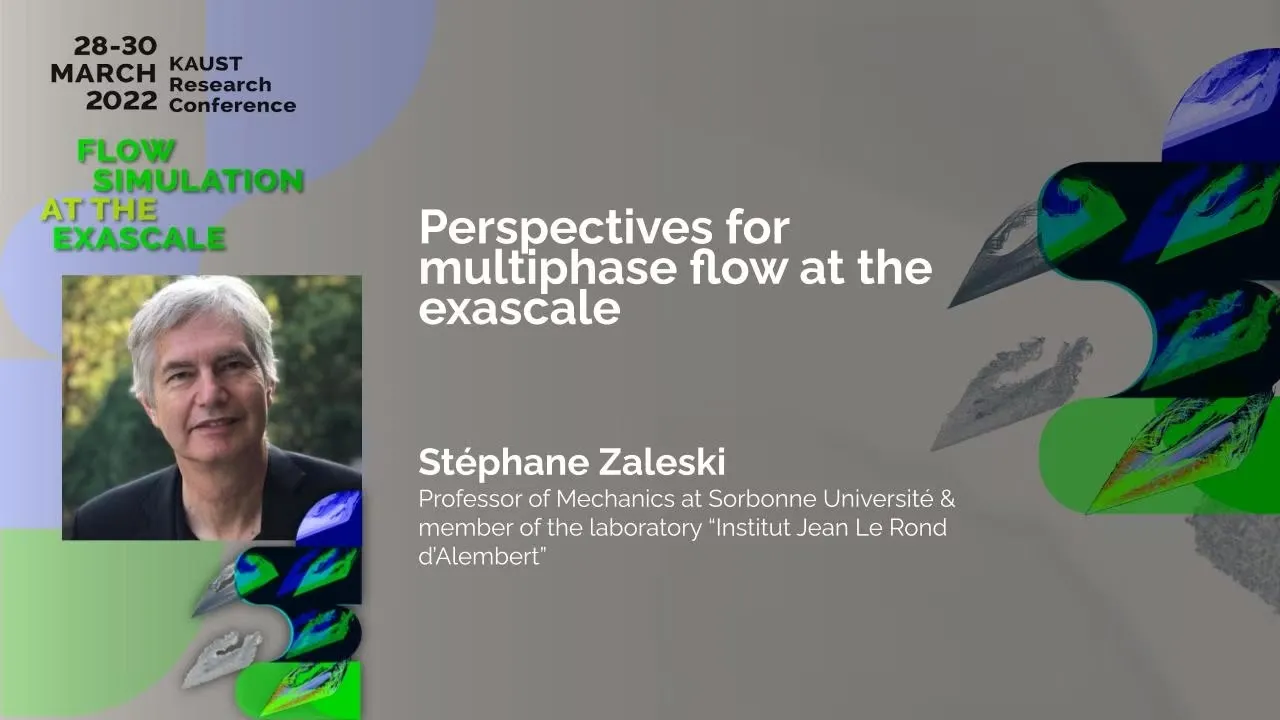
Perspectives for multiphase flow at the exascale
- Stéphane Zaleski, Professor of Mechanics, Sorbonne Université, member of the laboratory “Institut Jean Le Rond d’Alembert”
KAUST Library
We will discuss the current state of the art of very large multiphase flow simulations for flows involving very large ranges of scales, such as those involving liquid jet high speed atomisation producing very small droplets, the ladle flows in metallurgy at very large Schmidt numbers, and the boiling flows at large Jakob numbers. It is likely that high performance octree and VOF methods will not by sufficient to reach the exascale and that other techniques, such as time parallelisation, will be needed.
Overview
Abstract
We will discuss the current state of the art of very large multiphase flow simulations for flows involving very large ranges of scales, such as those involving liquid jet high speed atomisation producing very small droplets, the ladle flows in metallurgy at very large Schmidt numbers, and the boiling flows at large Jakob numbers. It is likely that high performance octree and VOF methods will not by sufficient to reach the exascale and that other techniques, such as time parallelisation, will be needed.
Brief Biography
Stéphane Zaleski is Professor of Mechanics at Sorbonne Université and member of the laboratory “Institut Jean Le Rond d’Alembert”. After early years at the Physics Laboratory of ENS Paris and the applied math group of MIT he joined the Mechanics group at University of Paris 6. He investigates numerical methods for multiphase flow with applications to atomization, cavitation, porous media flow, nucleate boiling, hydrometallurgy, moving contact lines and droplet impact, including several variants of the Volume of Fluid method, the Edge Based Interface Tracking method, the diffuse interface method and molecular dynamics. He has written several computer codes for the simulation of two-phase flow including PARIS Simulator (with D. Fuster, Y. Ling, R. Scardovelli and G. Tryggvason) and is an active user of the basilisk platform. Recently he applied these techniques to the study of Covid-19 airborne transmission by micron-sized droplets. He is Associate Editor of J. Comput. Phys. and of Computer and Fluids. He leads the ERC project TRUFLOW on mass transfer at large Schmidt numbers and is a member of Institut Universitaire de France.